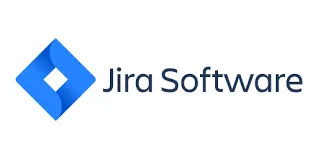In today’s fast-paced business environment, effective project management is crucial to success. Jira, a popular project management and issue tracking tool by Atlassian, is designed to help teams streamline their day-to-day operations and work more efficiently. With its powerful features and customizable workflows, Jira can be tailored to fit your organization’s unique needs, maximizing collaboration and productivity. In this blog post, we’ll explore the benefits of Jira, discuss its key features, and demonstrate how it can revolutionize your team’s project management process.
Customizable Workflows and Issue Types
Jira offers customizable workflows and issue types, allowing you to tailor the tool to fit your team’s specific processes and requirements. This flexibility enables you to design workflows that accurately reflect your organization’s project management methodology, ensuring that your team stays on track and works efficiently.
Example: Create custom issue types, such as bugs, tasks, or feature requests, and design unique workflows for each type, incorporating steps like analysis, development, testing, and deployment to accurately model your team’s development process.

Agile Project Management
Jira is built with agile methodologies in mind, providing powerful features for Scrum, Kanban, and other agile frameworks. With Jira’s agile boards, you can visualize your team’s progress and easily manage work in progress, enabling you to prioritize tasks, identify bottlenecks, and maintain a steady pace of development.
Example: Use Jira’s Scrum boards to plan and track sprints, manage backlogs, and monitor your team’s velocity. Alternatively, leverage Kanban boards to visualize your team’s workflow, limit work in progress, and ensure a smooth flow of tasks from start to finish.
Comprehensive Reporting and Analytics
Jira offers a wealth of reporting and analytics features to help you monitor your team’s progress and make data-driven decisions. With customizable reports and dashboards, you can easily track key performance indicators (KPIs), identify trends, and evaluate the effectiveness of your project management processes.
Example: Configure Jira dashboards to display important metrics, such as sprint burndown, cumulative flow, or average time to resolution, enabling your team to stay focused on achieving their goals and continuously improving their performance.
.
Seamless Integrations
Jira’s extensive ecosystem of integrations allows you to connect the tool with a wide variety of other software, streamlining your team’s workflow and boosting productivity. From source control systems like Git and SVN to collaboration tools like Slack and Confluence, Jira’s integrations help you create a unified project management experience.
Example: Integrate Jira with Confluence to create a centralized knowledge base for your team, linking relevant documentation to Jira issues and enabling seamless collaboration. Additionally, connect Jira to your preferred CI/CD tools, such as Jenkins or Bamboo, to automate your development and deployment processes.
Powerful Collaboration Features
Jira’s collaboration features make it easy for your team to communicate, share information, and work together effectively. With features like mentions, comments, and shared filters, Jira ensures that your team stays in sync and up-to-date on project progress.
Example: Leverage Jira’s commenting system to discuss issues, provide feedback, and collaborate on solutions. Additionally, use shared filters and dashboards to keep your team informed about the status of their tasks and the overall project.
Conclusion
Jira is an essential tool for teams looking to supercharge their day-to-day operations and optimize their project management processes. Its customizable workflows, agile project management features, comprehensive reporting, seamless integrations, and powerful collaboration.




